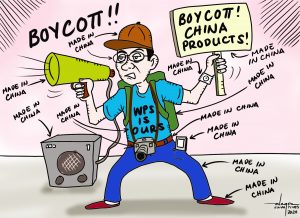POVERTY and inequality are recurrent in the Philippines. According to PSA, in 2018, the highest poverty incidence was registered among farmers with 31.6% and the fisherfolks at 26.2%. The ADB in a 2009 Report, revealed their location. They are living in rural areas.
If poverty is described this way, no wonder Mindanao will always be viewed as poor.
Mark Twain said, “it’s not what we don’t know that gets us into trouble; it’s what we know for sure that just ain’t so.”
The assumptions of nature and character of Mindanao poverty and also its progress needs to be understood, as these would have consequences on growth, a self-fulfilling effect.
Let me share Price’s Law which described the dismal disparity in the number of people enjoying the benefits of productivity concerning productive potential and the size of resources dedicated for production. As confirmed in publications and literature, Price’s Law can also explain the terrain of growth — only a fraction of the population obtains the benefits of productive uses.
Mindanao experiences low to moderate economic growth owing to weaknesses in employment brought about by the underdeveloped and undervalued agriculture and a weak link with manufacturing industries.
I remember attending a conference where a friend shared insights on the value chain of papaya.
He shared that a papaya’s farmgate price is P15, but when sold in the market with a plastic covering and a brand name, it’s P100.
I asked why the farmers would allow it. He said they don’t’ allow; it’s forced unto them.
Mindanao continues to wade towards progress. At the core of its pursuit are the people, the farmers, the fishermen, and the workers who are singlehandedly denied their rightful share, value, and benefits of growth.
Therefore, poverty is brought about by geographic and psychological isolation.
The inadequacy of infrastructures that could have afforded effective and seamless transportation, logistics, and post-harvest facilities is proof of attention that has been a long time coming.
The national attention need be guided to find solutions that reflect the realities on the ground.
That poverty is essentially a rural problem such that development needs to focus on the countryside.
Connecting rural areas to the urban centers for food, energy, raw materials, human interaction and information will bring economies of scale in agriculture, modernization of industries, and innovation in the services sector. As we use to say, rising tide lifts all boats.
With Secretary Maria Belen Acosta at the helm of Mindanao Development Authority (MinDA), the agency pursues Mindanao Development Corridor (MinDC).
MinDC is a spatial development strategy that connects the undeveloped areas with the developed centers to take advantage of the natural endowments and usher in domestic growth.
The aim is to harness governance and culture, sustain environmental integrity, widen economic opportunities, improve interconnectivity and farm productivity, hasten economic recovery, revive tourism, and achieve a reliable and affordable Mindanao power.
The intended progress is rudimentary and deeply interwoven in the social fabric of the Mindanawons. It is also logically consistent with the bottom line of business and investments. After all, progress is not only about numbers. Progress has a human face.
(Adrian Tamayo is the head of the Public Relations of the Mindanao Development Authority (MinDA). He also teaches economics at the Graduate School of the University of Mindanao and is currently on a scholarship grant for a Master of Public Safety Administration (MPSA) at the Philippine Public Safety College).

